This detailed step-by-step will guide you through our tried-and-true method for making a moist, tender, flavorful roast turkey every time.
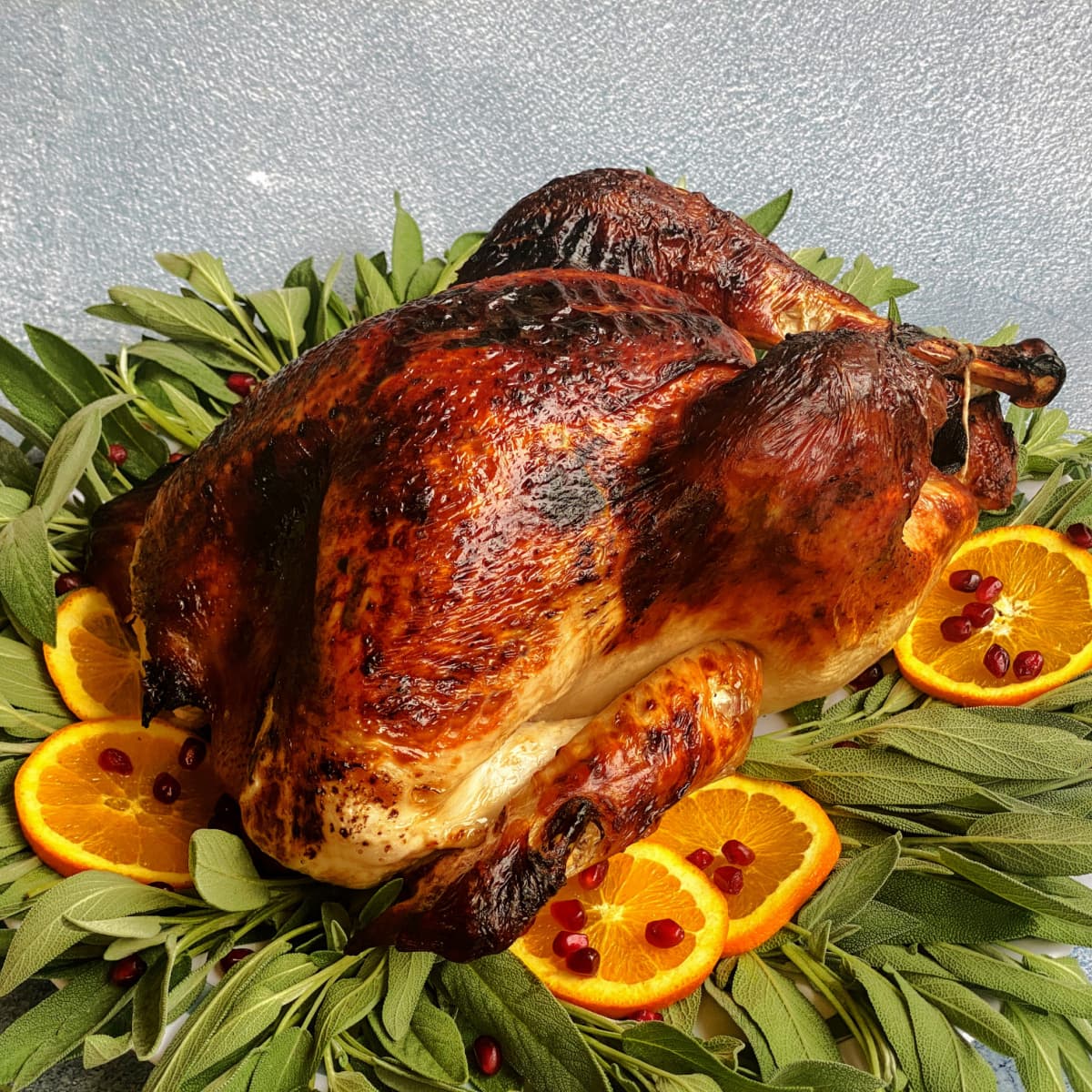
Jump to:
Growing up, whenever my mom roasted a turkey, it was traumatic. The worst was the year we had to wait two extra hours for our Thanksgiving dinner because that darn little red button on the Butterball never popped up, and Mama was convinced we would all die of food poisoning if it didn't. So harrowing was our annual turkey drama that it took me nearly a decade after moving out before I even considered trying to roast a turkey, and another ten years to perfect my technique.
Thankfully, oven roasted turkey doesn’t have to be distressing. For years now, I've been using this easy, drama-free oven-roasting method (leaning heavily on Alton Brown's approach) to prepare our holiday turkey, and we have a moist, tender, flavorful turkey every time.
What You Need for this Roast Turkey Recipe
Turkey
If you plan to brine the turkey first, look for a fresh bird that is labeled "natural."
Avoid using turkeys labeled “basted”, “kosher”, “enhanced,” or “self-basting.” These turkeys have been injected with flavoring additives and saline solutions, which can prevent the bird from absorbing flavor from any home brining, and lead to overly salted meat in the process.
If you don't plan to brine the turkey at home, use fresh or fully thawed frozen pre-brined turkey.
To thaw a frozen turkey safely in the refrigerator, the USDA recommends allowing one day for each 4-5 pounds of weight. So, for example, if your turkey weighs 16 pounds, it will take about four days to thaw.
Aromatics for Cavity
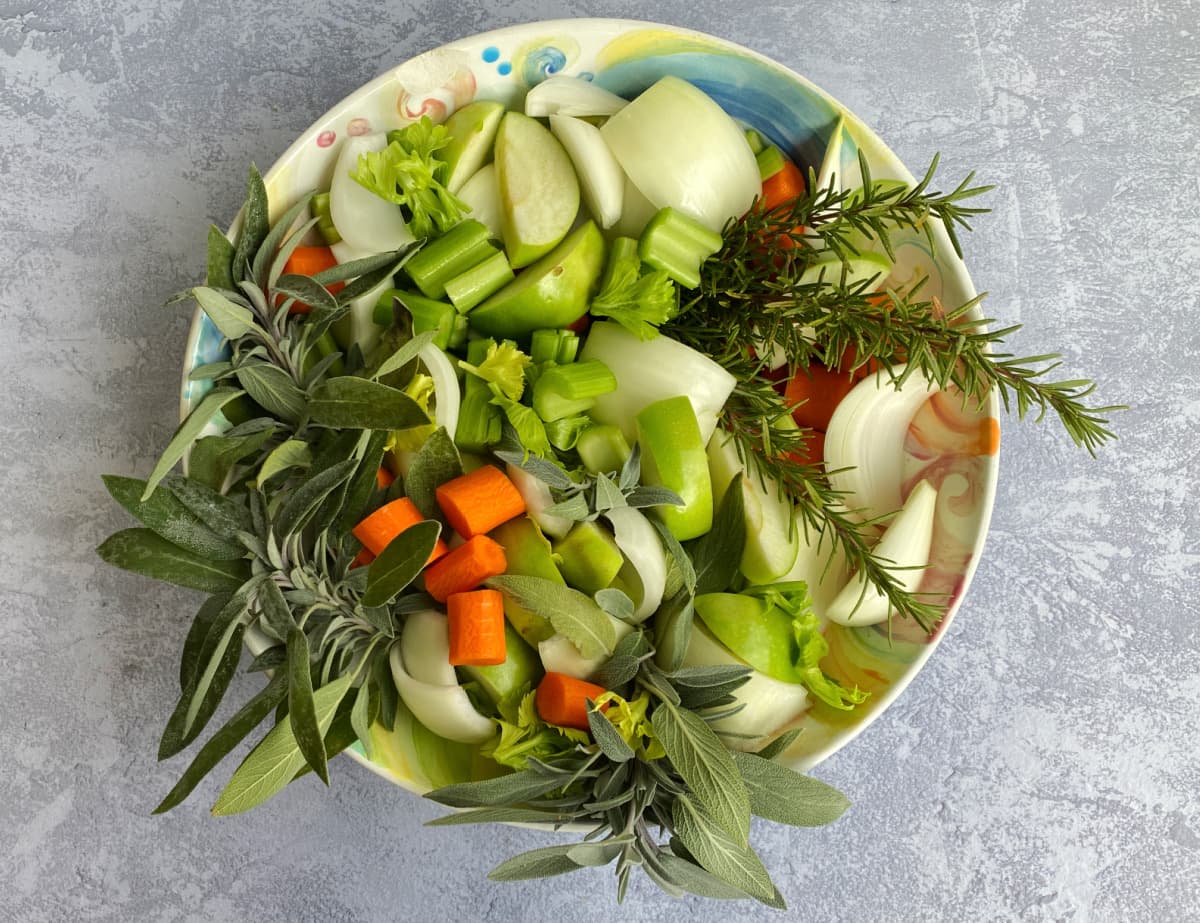
- Fresh rosemary: Keep rosemary on the stem for easy removal after the turkey has cooked.
- Fresh sage: Same as the rosemary. Noneed to remove the leaves from the stem.
- Carrots: Peel and cut into large chunks.
- Celery: Cut into large pieces.
- Onions: Cut onion into eights, stem to blossom end.
- Apples: Cut into eights.
You will also need butter and a neutral cooking oil.
How to Roast a Turkey in the Oven
If you plan to brine the turkey before roasting, start the brining process no later than the evening before the day you intend to roast the turkey. (For example, for a Thanksgiving Day turkey, start no later than Wednesday evening.)
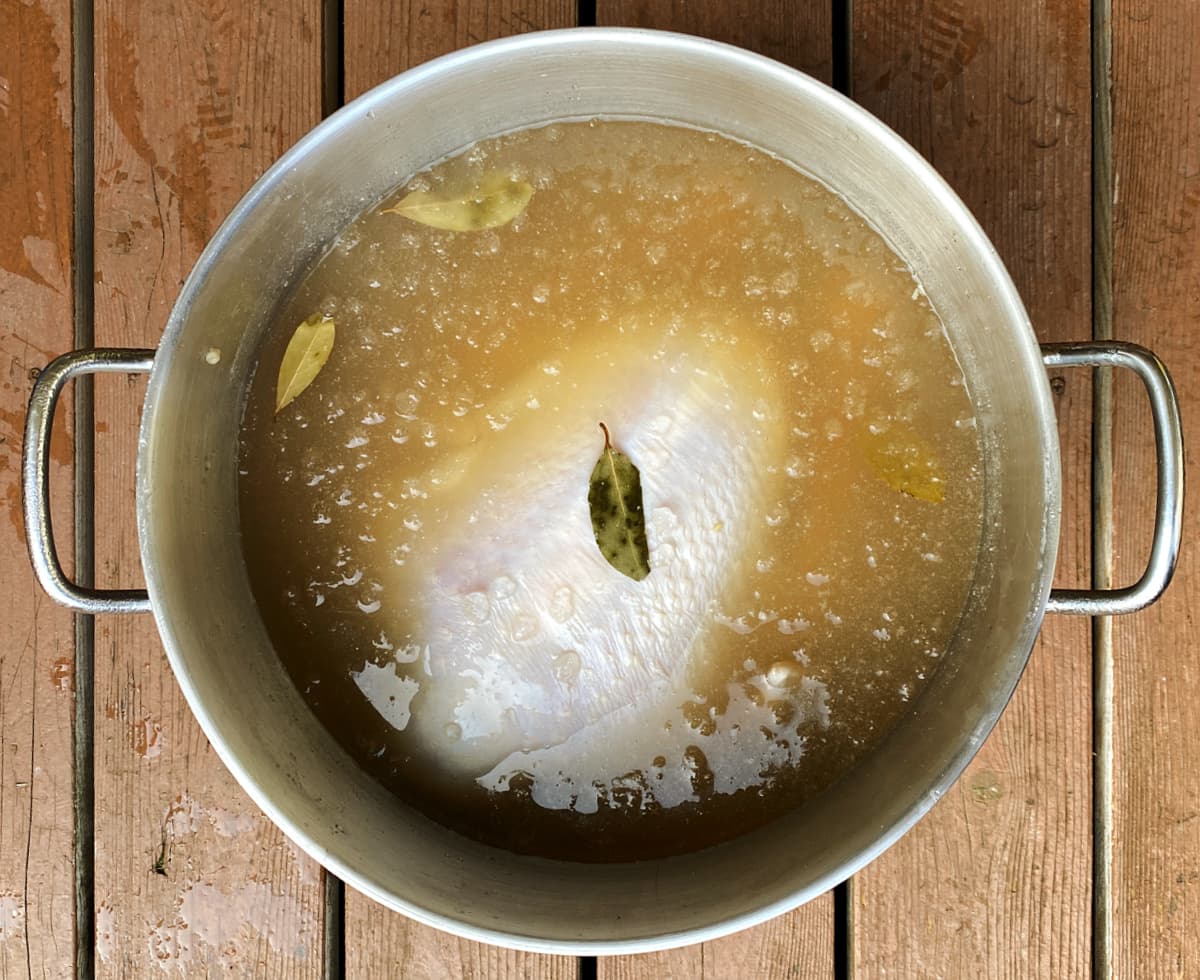
Tip: For complete direction about how to brine a turkey, visit our Apple Cider Turkey Brine with Citrus, Ginger, & Herbs recipe.
For extra crispy skin, allow the turkey to dry in the refrigerator for at least an hour after removing it from the brine, and before proceeding.
Hi-Low Technique for Oven Roasted Turkey
For a 14-16 pound turkey, start about 3½ to 4 hours before you want serve dinner. This will give you plenty of wiggle room if it takes more or less time to reach temperature.
Remove all the oven racks except one. Place the single rack in the next-to-the-lowest position.
Preheat oven to 450°F (233°C).
That's not a typo. The first time I tried this hi-low roasting technique, not only did the high start temperature fly in the face of everything I'd ever been taught about cooking big proteins, but it quite frankly scared me a little. Was I going to incinerate our holiday turkey?
Honestly, the first time I tried this method, I started it at 500°F (as per Alton Brown). However, a few more turkeys into it, I've found that 450°F is a better start point, at least for me. The skin still crisps and browns up beautifully, but the legs don't over-brown in the process.
While the oven heats up, combine the rosemary, sage, carrots, celery, onions, and apples and one cup of water in a large pot with a steamer rack or tray. Steam for 5 minutes, until everything is warm.
You can also do this step in a large, microwave-safe bowl. Microwave on high in 1-minute bursts, for up to 4-5 minutes, until warm.
Loosely pack the turkey cavity with the warm apples, herbs, vegetables. It is important to keep the packing loose. Use trussing lacers (optional) and butcher’s twine to tie the turkey’s back legs together.
Place turkey on a V-shaped rack set inside a large roasting pan, breast side up. Tuck the wings under. Place any leftover aromatics (apples, onions, carrots, herbs, etc.) in the bottom of the roasting pan.
Using a pastry brush, brush a 50/50 mixture of melted butter and canola oil over the surface of the turkey.
Optional Butter-rub: Instead of brushing with oil and butter, give your turkey a butter-rub! This imparts rich flavor, moistens the meat, and helps the skin cook up crispy and golden brown.
To do this, work from the neck end and slide your fingers under until you reach the end of the breast, carefully loosening the skin as you go. Take care not to tear the skin. Rub softened butter or herb butter under the skin on the breast and upper legs. Rub the turkey with butter on top of the skin as well.
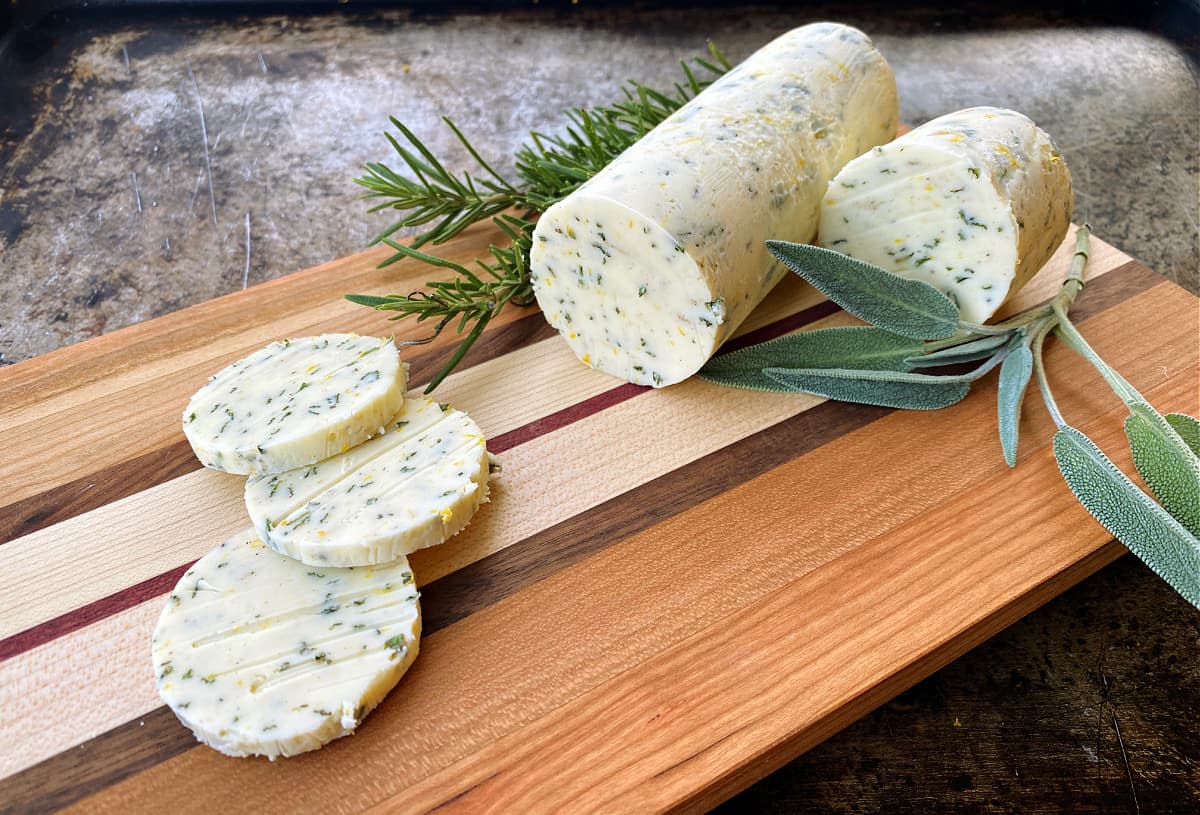
Use plain, salted or unsalted butter, or try our Citrus Herb Butter, a delicious compound butter recipe we develop especially for use with our Apple Cider Turkey Brine. It will take about half a cup of butter (one stick) to cover a 14-16 pound turkey.
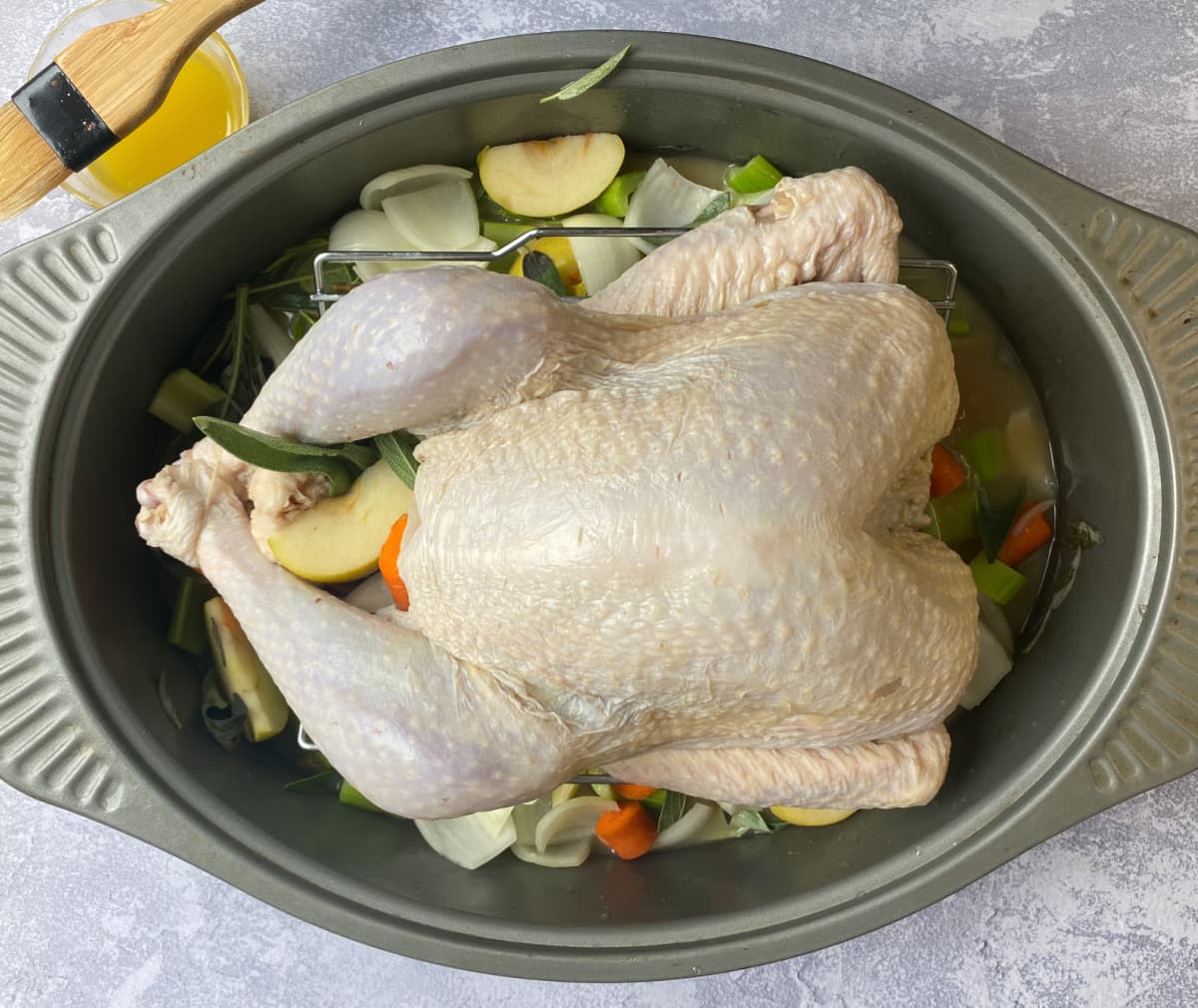
Next, cut a piece of foil big enough to cover the turkey's breast. Mold the foil piece to the breast. Remove the foil breast shield you just created, and spray the side that touches the turkey liberally with cooking spray or canola oil.
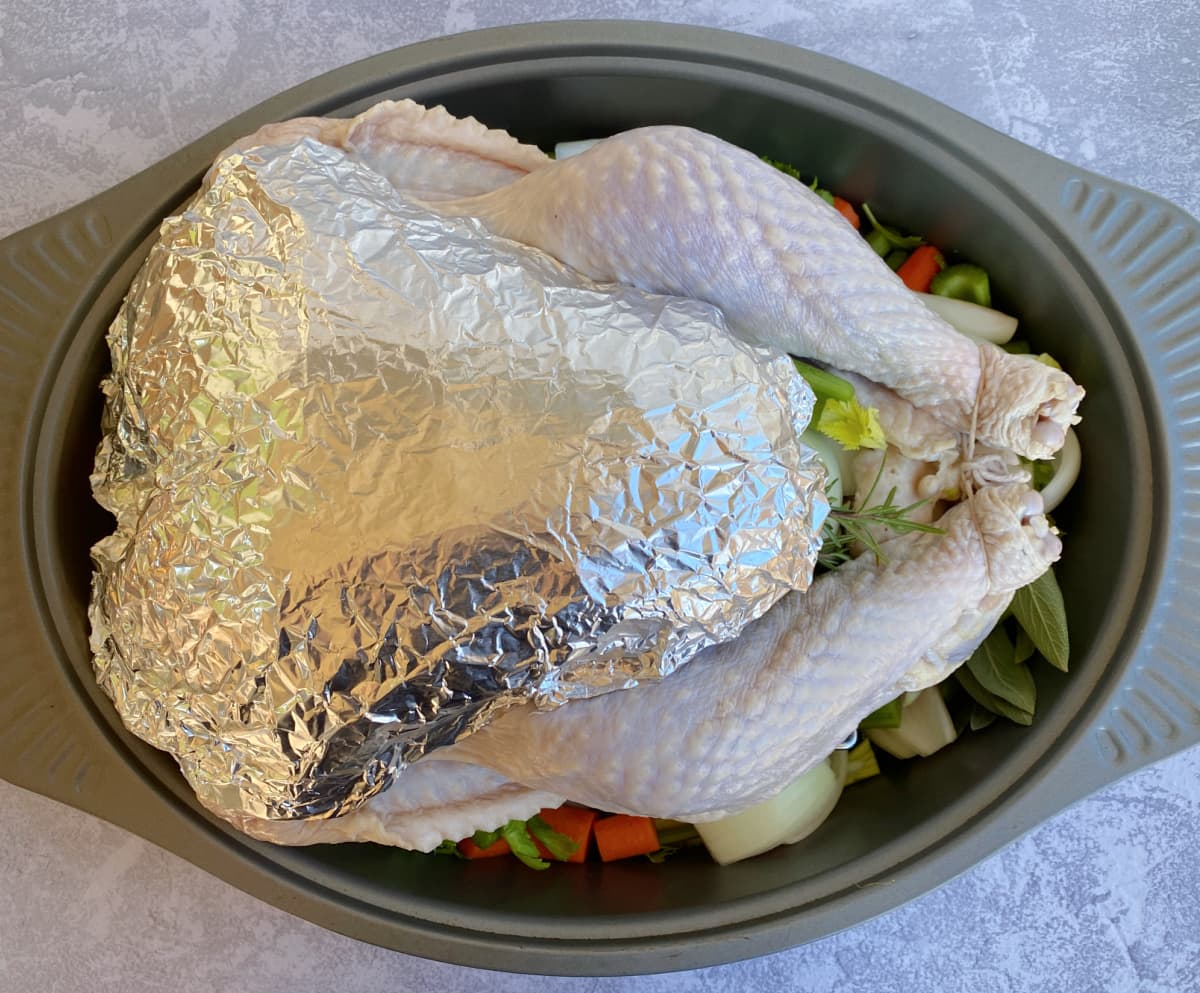
Set the shield aside for now.
Pour 3-4 cups of chicken stock in the bottom of the roasting pan. (If you like your turkey gravy to be on the slightly sweet side, you can add up to a cup of apple cider in place of one cup of stock.)
Place the prepared turkey in the oven, neck end first and breast up. Roast for 30 minutes at 450°F (233°C).
If the breast is golden brown, proceed. If it looks very pale, give it another 10 minutes.
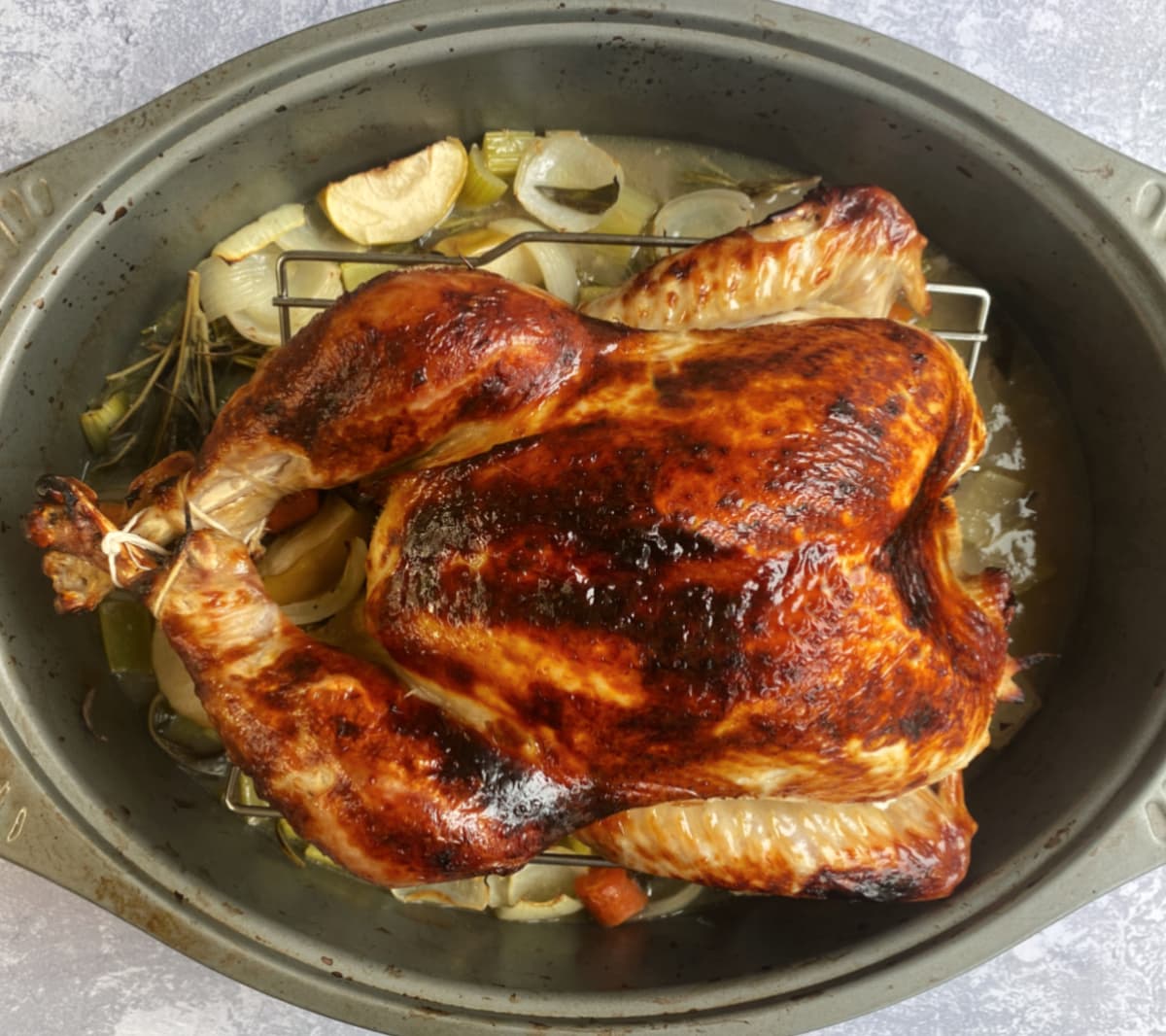
Reduce oven temperature to 350°F (177°C).
Carefully remove the turkey from the oven, and apply the prepared breast shield. Insert an oven temperature probe at this time if desired.
Return the foil-covered turkey to oven.
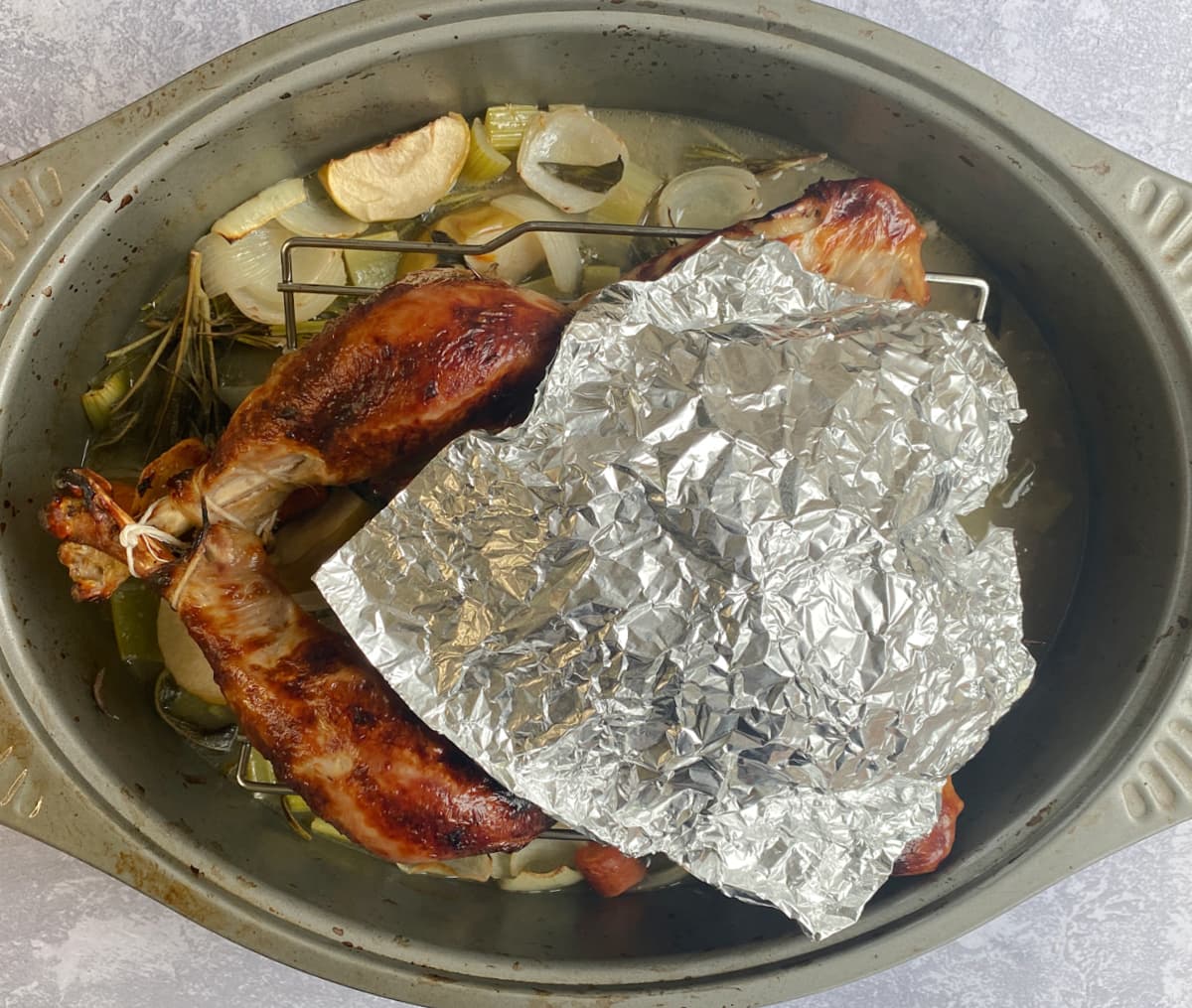
Roast until an oven probe thermometer inserted in the thickest part of the breast registers 161°F (72°C), and/or 180°F (82°C) in the thickest part of the thigh.
If you don't have an oven probe, do not open the oven for 1½ hours. After 1½ hours, check the turkey every 20 minutes using an instant read thermometer inserted into the thickest part of the breast [161°F (72°C)], and/or in the thickest part of the thigh [180°F (82°C)].
Out of the Oven
When you remove the turkey from the oven, cover it completely with foil and let it rest at room temperature for at least 30 minutes.
This resting time allows for carryover cooking, as the turkey’s internal temperature continues to rise after it comes out of the oven. It also allows the turkey to reabsorb the cooking juices; ensuring moist, tender meat.
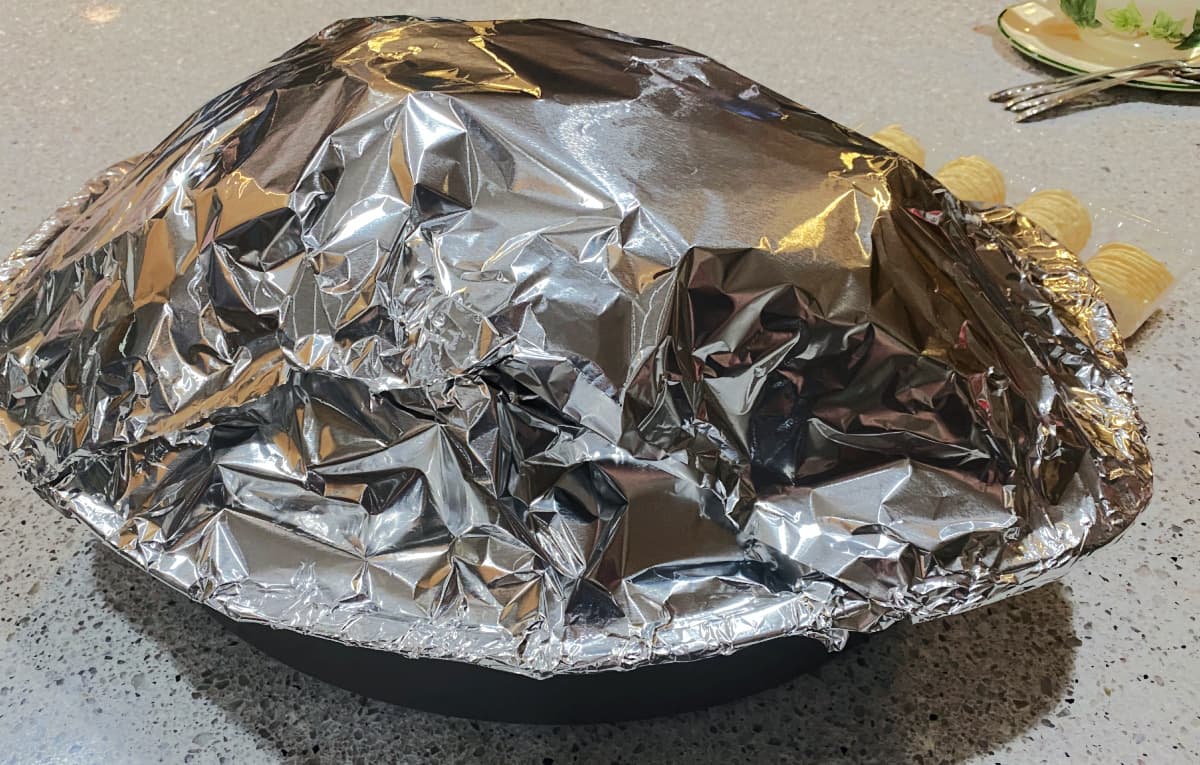
Reserve the pan drippings and juices to make turkey gravy.
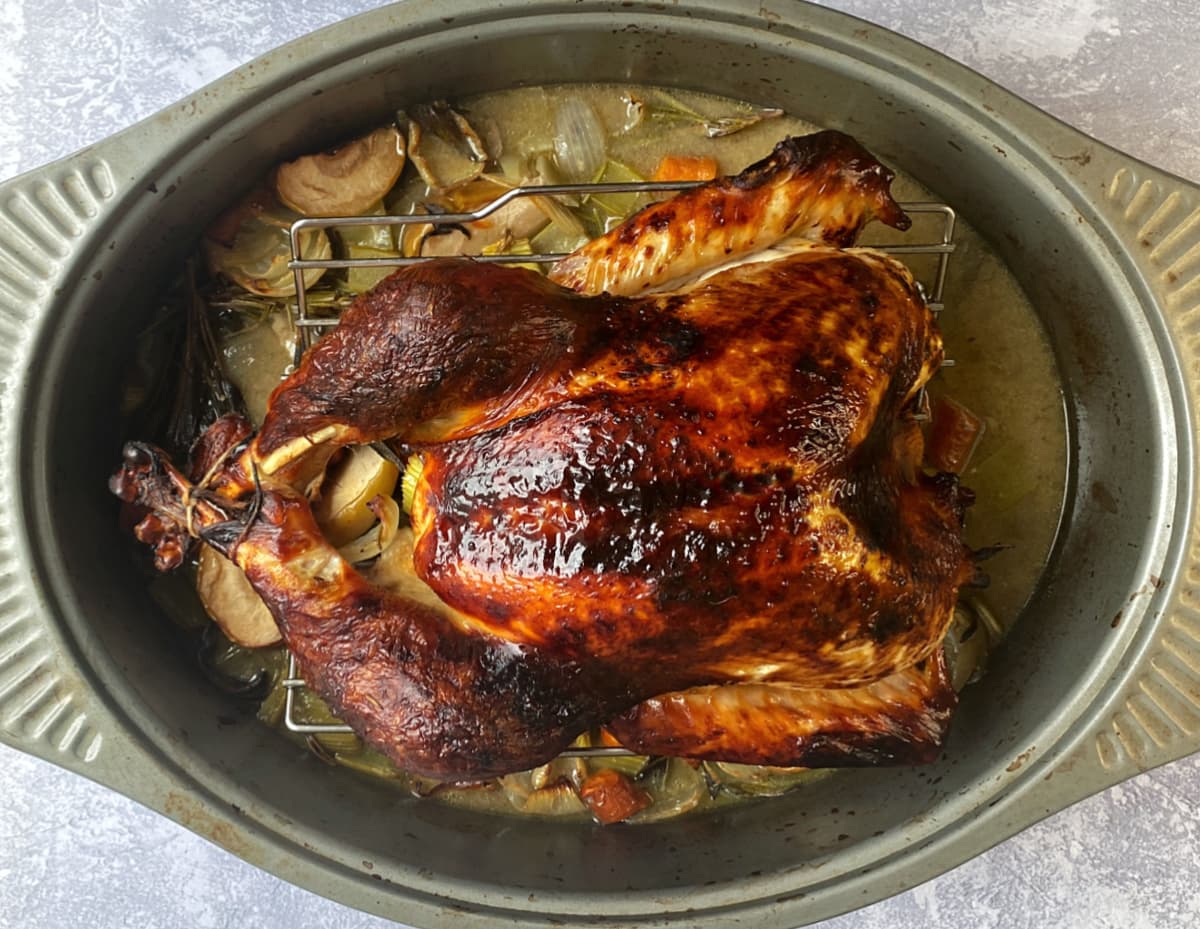
Carve the turkey and serve with turkey gravy, dressing, cranberry sauce, and all the trimmings.
Equipment
When I oven roast a turkey, I use a big, sturdy roasting pan (the same one I use to make Nuts & Bolts). Disposable aluminum racks are also an option, and save big on clean-up.
An adjustable roasting rack elevates the turkey above the pan juices for better circulation and more even baking. The roasting rack we use is oven-safe up to 500°F, and has 7 positions so you can easily adjust it to fit whatever you are roasting.
Storage
Allow cooked turkey to cool, and then wrap tightly in plastic film and place in a sealed container. Refrigerated turkey should be used within 3 to 4 days.
Cooked turkey can be frozen for 3 to 4 months.
Top Tip
The key to knowing how long to cook a turkey (one my poor mother didn't have) is a meat thermometer. It is a game-changer!
To obtain an accurate reading, make sure the thermometer probe doesn't come into contact with any bone or gristle, or the pan.
If your oven is equipped with a oven probe, this is the best way to go.
- When: After applying breast shield, and before returning the bird to the oven.
- How: Pierce an oven probe through the foil shield and into the thickest part of the turkey breast. Set it to go off at 161°F (72°C).
- Why: Using an oven-safe temperature probe alleviates the need to take the turkey in and out of the oven to check the temperature.
- When: After the turkey has baked for at least 1½ hours.
- How: Remove the turkey from the oven and place it on counter. Close the oven door to retain heat before checking turkey temperature.
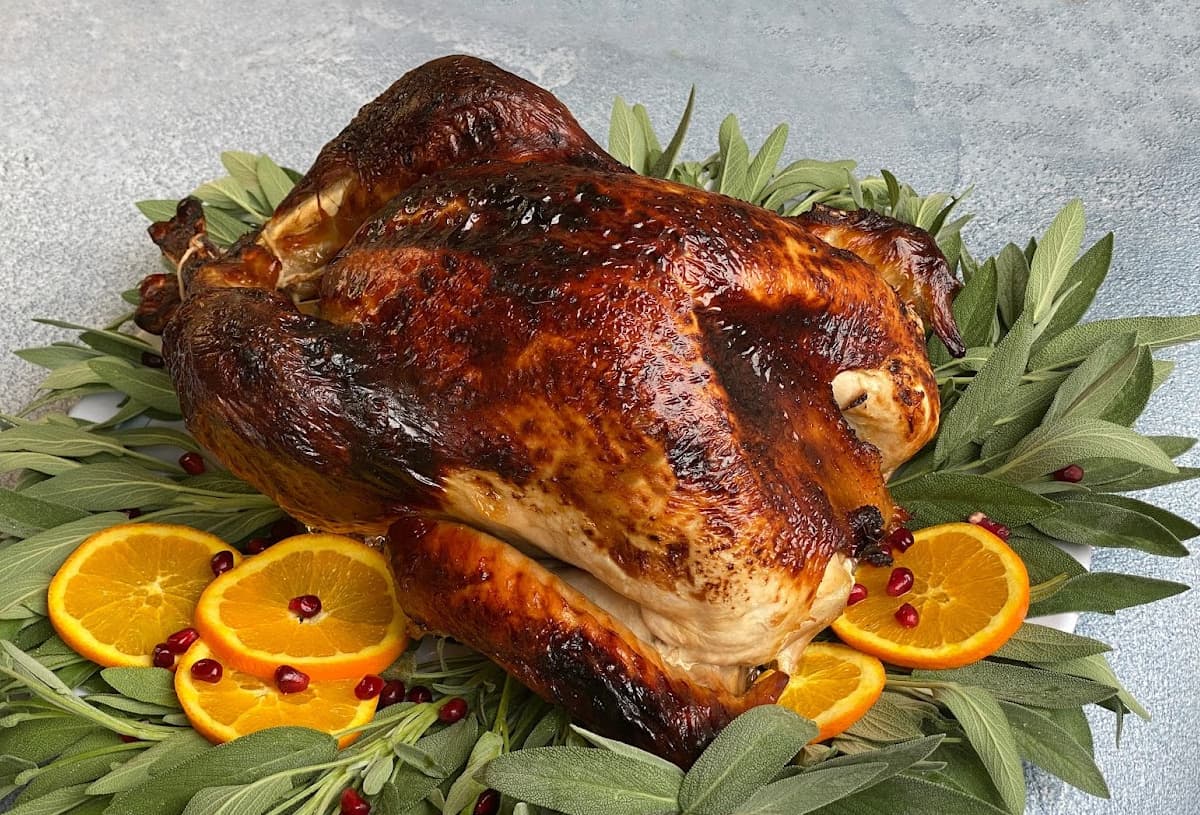
More Thanksgiving Recipes
- Thanksgiving Roast Stuffed Pumpkin
- Multigrain Stuffing with Fruits & Nuts
- Orange Spiced Cranberry Sauce
- Triple Ginger Pumpkin Pie
What to Do with Leftover Turkey
One of our favorite ways to use leftover turkey is to make Turkey Pasta Salad with Honey-Citrus Dressing. It's absolutely delicious, and perfect for post-holiday potlucks.
In almost every case, You can sub in leftover turkey for cooked chicken. Leftover turkey pot pie is scrumptious: make it just like our chicken pot pie! Other recipes we enjoy making with leftover turkey include creamy turkey salad, slow cooker white turkey chili, or a savory mushroom turkey tart.
One of our absolute favorite ways to use leftover turkey is in an open-faced hot turkey sandwich. Talk about comfort food!
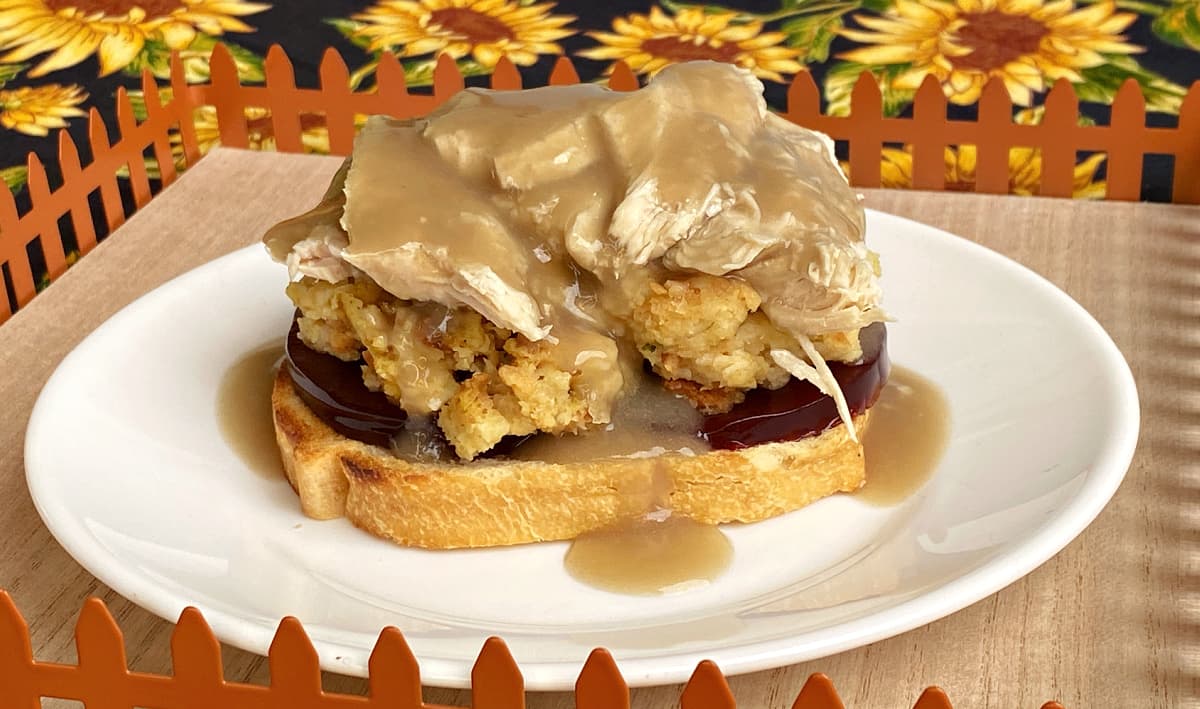
For more ideas on how to use leftover turkey, visit our collection of main dish recipes for using leftover turkey and leftover turkey soup round-up.

Want More Free Recipes?
Subscribe to our newsletter to get family-friendly recipes and cozy living ideas in your inbox each week!
Find us on Instagram, Pinterest, and Facebook, too.
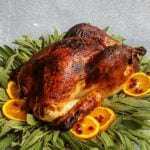
Classic Oven Roasted Turkey for Thanksgiving
Equipment
- 1 roasting pan
- 1 V-rack
Ingredients
- 14-16 pound fresh turkey
- 1 handful fresh rosemary sprigs
- 1 handful fresh sage
- 2-3 medium carrots peeled & cut into large cubes
- 2-3 stalks celery cut into 1" pieces
- 1 large onions quartered and divided
- 2 large apples Granny Smith; cut into eighths
- 4 ounces melted butter
- 4 ounces canola oil
Instructions
- If you plan to brine the turkey before roasting, start the brining process no later than the evening before the day you intend to turkey. (For example, for a Thanksgiving Day turkey, start no later than Wednesday evening.)For a 14-16 pound turkey, start roasting your turkey about 3½ to 4 hours before you want serve dinner. This will give you plenty of wiggle room if it takes more or less time to reach temperature.
- Remove all the oven racks except one. Place the single rack in the next-to-the-lowest position.Preheat oven to 450°F (233°C).
- While the oven heats up, combine the rosemary, sage, carrots, celery, onions, and apples and one cup of water in a large pot with a steamer rack or tray. Steam for 5 minutes, until everything is warm.You can also do this step in a large, microwave-safe bowl. Microwave on high in 1-minute bursts, for up to 4-5 minutes, until warm.
- Loosely pack the turkey cavity with the warm apples, herbs, vegetables. It is important to keep the packing loose.
- Use trussing lacers (optional) and butcher’s twine to tie the turkey’s back legs together.Place turkey on a V-shaped rack set inside a large roasting pan, breast side up. Tuck the wings under. Place any leftover aromatics (apples, onions, carrots, herbs, etc.) in the bottom of the roasting pan.
- Using a pastry brush, brush a 50/50 mixture of butter and canola oil over the surface of the turkey.Alternately, give the turkey a butter-rub. (see Notes)
- Cut a piece of foil big enough to cover the turkey's breast. Mold the foil piece to the breast. Remove the foil breast shield you just created, and spray the side that touches the turkey liberally with cooking spray or canola oil.Set the shield aside for now.
- Pour 3-4 cups of chicken stock in the bottom of the roasting pan. (If you like your turkey gravy to be on the slightly sweet side, you can add a cup of apple cider in place of one cup of stock.) Place the prepared turkey in the oven, neck end first and breast up. Roast for 30 minutes at 450°F (233°C).
- If the breast is golden brown, proceed. If it looks very pale, give it another 10 minutes.
- Reduce oven temperature to 350°F (177°C).Carefully remove the turkey from the oven, and apply the prepared breast shield. Insert an oven temperature probe at this time if desired.Return the foil-covered turkey to oven.
- Roast until an oven probe thermometer inserted in the thickest part of the breast registers 161°F (72°C), and/or 180°F (82°C) in the thickest part of the thigh.If you don't have an oven probe, do not open the oven for 1½ hours. After 1½ hours, check the turkey every 20 minutes using an instant read thermometer inserted into the thickest part of the breast [161°F (72°C)], and/or in the thickest part of the thigh [180°F (82°C)].
Out of the Oven
- When you remove the turkey from the oven, cover it completely with foil and let it rest at room temperature for at least 30 minutes.This resting time allows for carryover cooking, as the turkey’s internal temperature continues to rise after it comes out of the oven. It also allows the turkey to reabsorb the cooking juices; ensuring moist, tender meat.Reserve the pan drippings and juices to make gravy.
- Carve the turkey and serve with dressing, cranberry sauce, and all the trimmings.
Notes
Aromatics Prep:
- Fresh rosemary: Keep rosemary on the stem for easy removal after the turkey has cooked.
- Fresh sage: Same as the rosemary. Noneed to remove the leaves from the stem.
- Carrots: Peel and cut into large chunks.
- Celery: Cut into large pieces.
- Onions: Cut onion into eights, stem to blossom end.
- Apples: Cut into eights.
Nutrition
This website provides approximate nutrition information for convenience and as a courtesy only. You are solely responsible for ensuring that any nutritional information provided is accurate, complete, and useful.
Love it? Pin it! If you love this Roast Turkey recipe, be sure to save it! Pin it to your favorite Pinterest recipe board before you go!
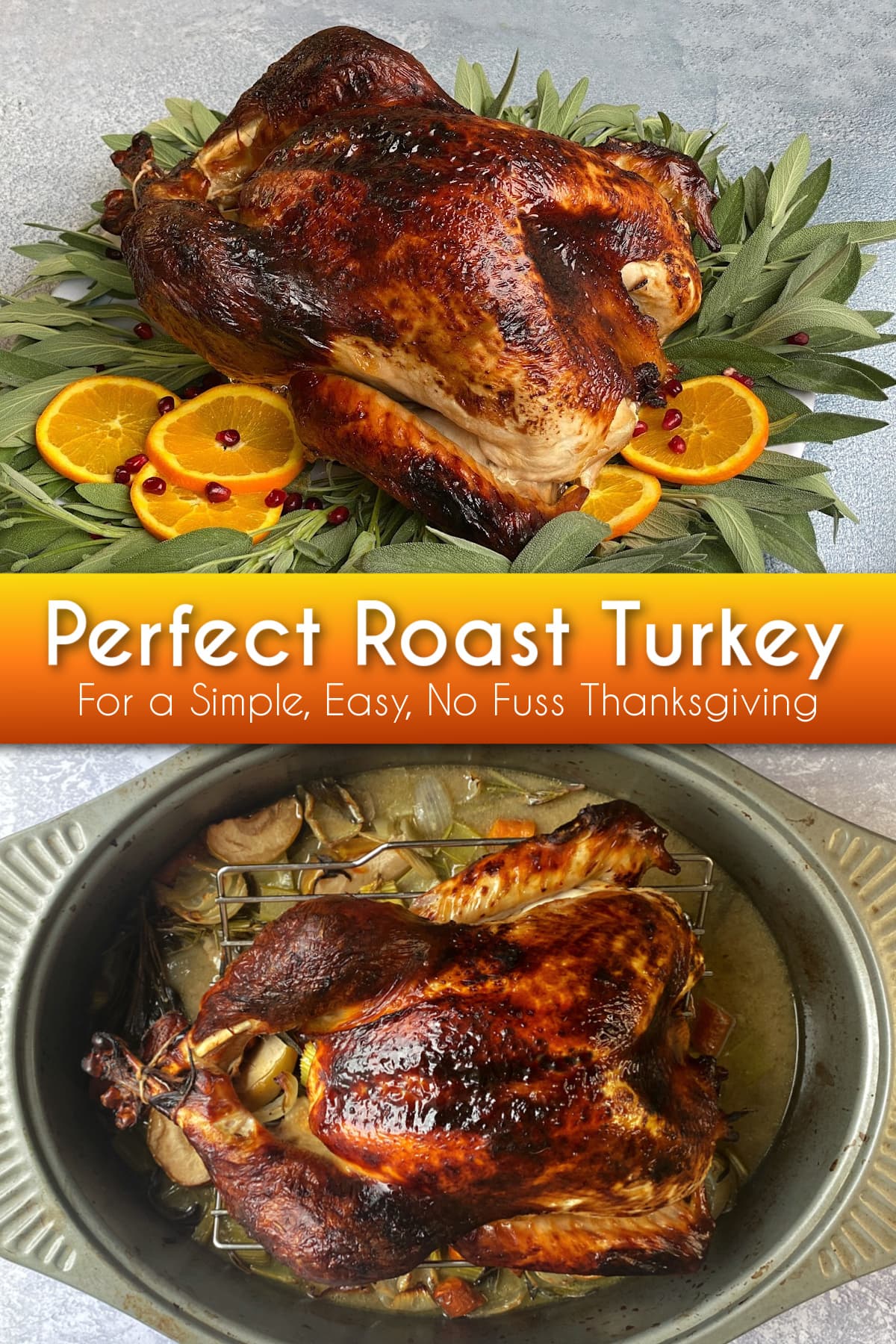
Thank you for visiting the Good Hearted Woman. Remember to bookmark this site, and come back soon!



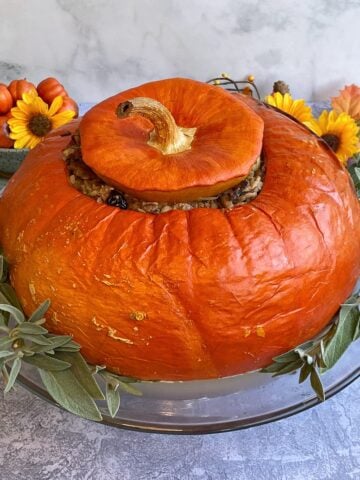
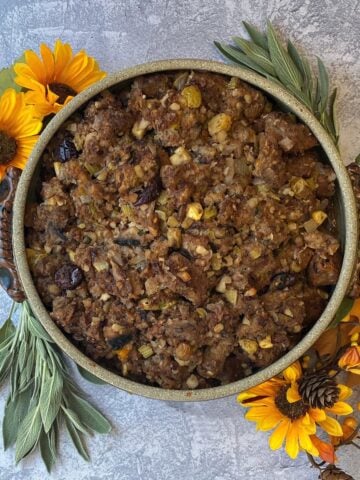
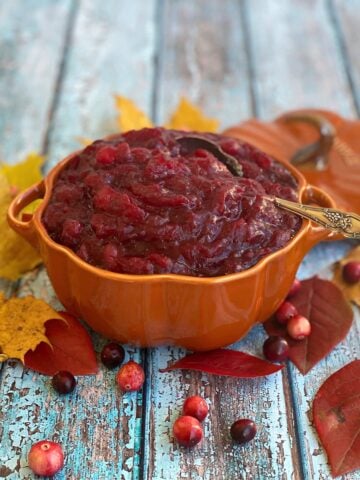
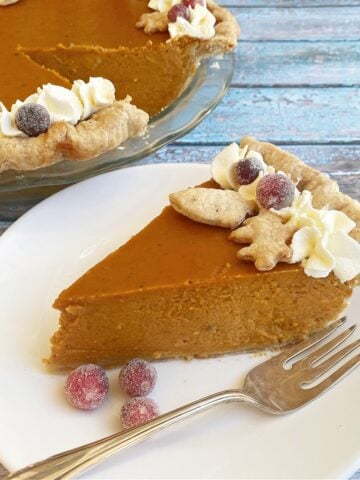
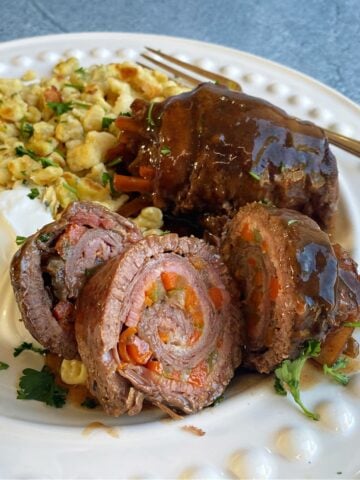
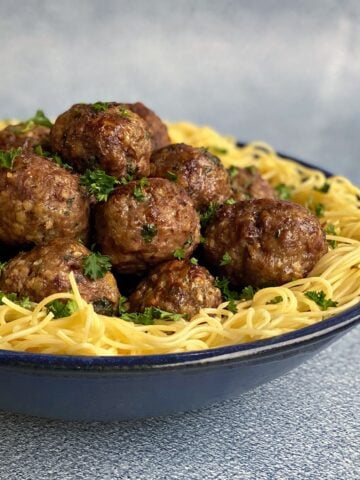
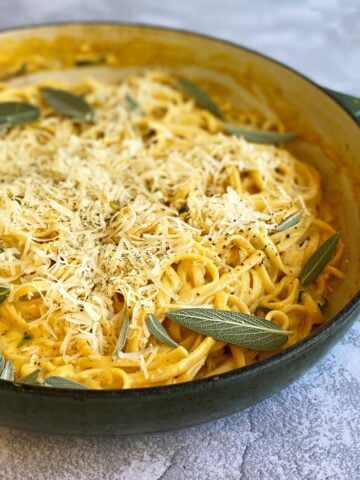
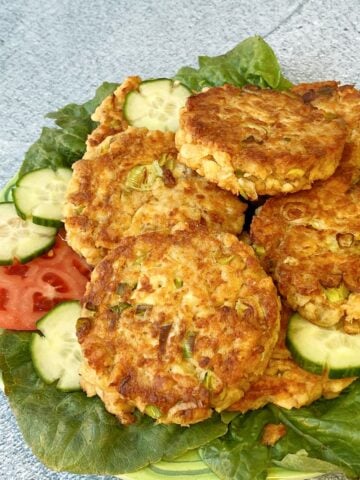
Leave a Reply